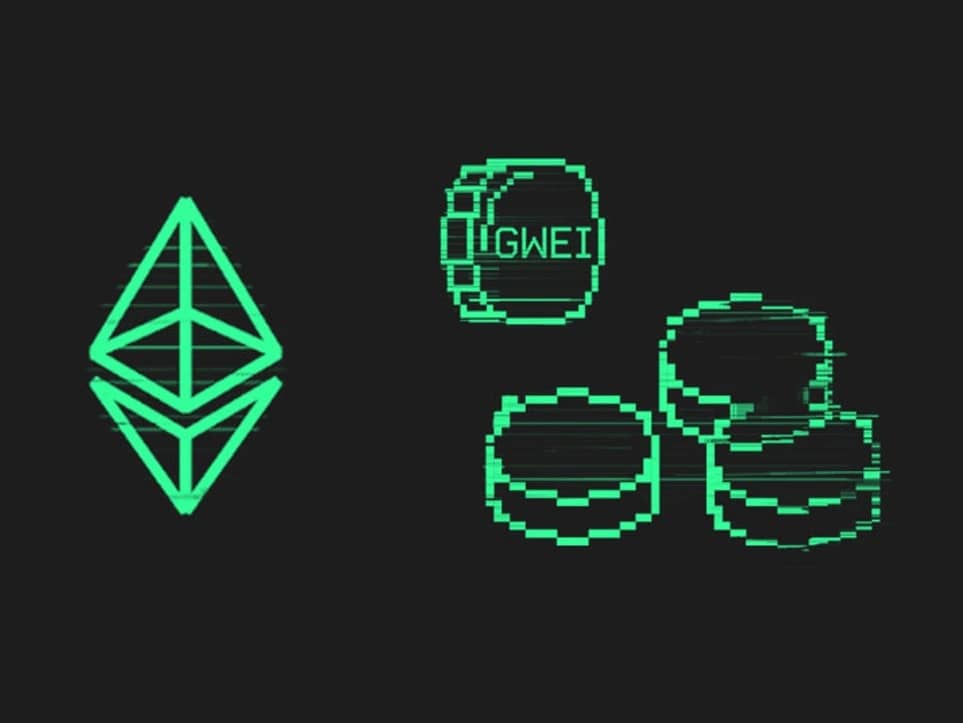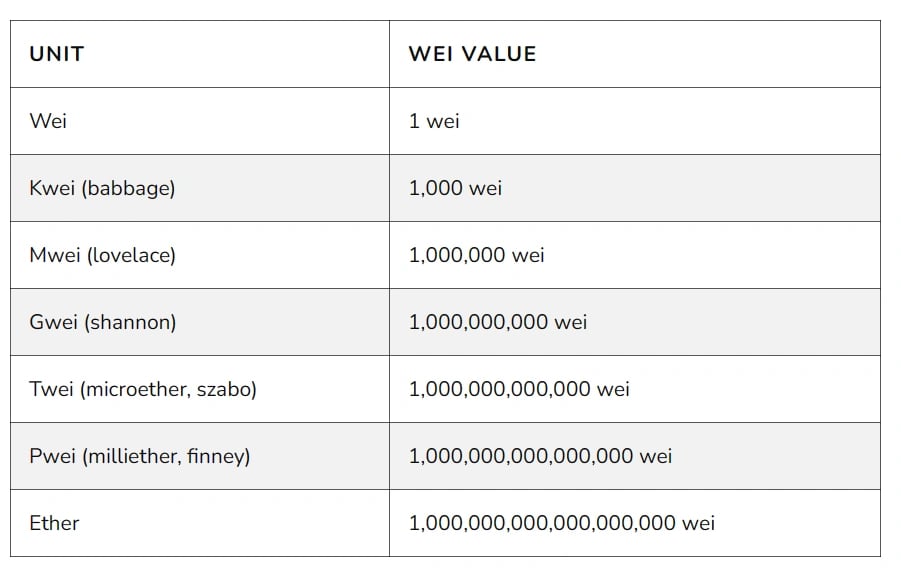위키 구독하기
Share wiki
Bookmark
Gwei
Gwei
Gwei(귀)는 이더리움(Ethereum) 블록체인의 기본 통화인 암호화폐 이더(ETH)의 작은 단위입니다. Gwei는 기가웨이(gigawai)의 약자이며, 나노이더(nanoether) 또는 간단히 나노(nano)라고도 불리며, ETH의 9제곱에 해당하는 분수 단위를 나타냅니다. 이 용어는 가스(gas)와 이더리움(Ethereum) 네트워크의 거래 수수료에 대해 이야기할 때 널리 사용됩니다.[1][4]
[5]
개요
Gwei는 “Giga Wei”의 약자이며, 1 퀸틸리온 이더리움 Wei(1,000,000,000,000,000,000 Wei), 즉 0.000000001 ETH에 해당합니다. Gwei는 나노이더라고도 하며, 1 ETH의 10억 분의 1입니다. Gwei는 가스를 나타내는 데 사용되기 때문에 가장 일반적으로 사용되는 이더 단위입니다. 가스는 이더리움(Ethereum) 네트워크에서 거래 처리 능력을 나타내는 용어입니다. 가스 수수료는 사용자가 이더리움 블록체인에서 거래를 처리하고 검증하는 데 필요한 컴퓨팅 에너지를 보상하기 위해 광부와 검증자에게 지불하는 비용입니다.[6]
1 Gwei는 10억(1,000,000,000) Wei와 같으며, 여기서 Wei는 이더의 가장 작은 단위입니다. 이더의 가치는 크게 변동될 수 있으므로, 가스 비용 측정 단위로 Gwei를 사용하면 거래 수수료와 네트워크 사용량을 표준화하는 데 도움이 됩니다. 거래의 가스 가격이 20 Gwei라고 하면, 해당 거래의 각 계산 단계 또는 작업에 대해 발신자는 거래 처리를 위해 광부에게 200억 Wei(또는 0.00000002 ETH)의 수수료를 지불할 의향이 있음을 의미합니다. 가스 가격은 거래의 우선 순위를 결정하는 요소이며, 가스 가격이 높을수록 거래 확인 시간이 빨라지는 경우가 많습니다. 이더리움(Ethereum) 네트워크 속어에서 Gwei는 미국 수학자이자 컴퓨터 과학자인 Claude E. Shannon의 이름을 따서 Shannon이라고도 불립니다. Shannon은 정보 이론의 기초를 마련한 공로를 인정받고 있습니다.[6][7][8]
이더의 단위
Wei (Wei) - Dai Wei는 모든 현대 암호화폐의 개념을 공식화했으며, 비트코인의 전신인 B-money의 창시자로 가장 잘 알려져 있습니다.
**Kwei (Babbage)**는 컴퓨터의 아버지로 여겨지는 영국의 수학자이자 기계 기술자인 Charles Babbage(1791-1871)의 이름을 따서 명명되었습니다. Babbage의 기계식 컴퓨터인 해석 기관에 대한 설계는 현대 컴퓨터 과학자들에게 영감을 주었습니다. 그의 설계의 현대적인 재현은 그의 아이디어가 실현 가능했다면 작동했을 것이라는 것을 증명하는 데 성공했습니다.
**Mwei (Lovelace)**는 뛰어난 수학자이자 시인 바이런 경의 딸인 Ada Lovelace(1815-1852)의 이름을 따서 명명되었습니다. 그녀는 Babbage와 협력하여 많은 사람들이 최초의 컴퓨터 프로그램으로 간주하는 것을 작성했는데, 이 프로그램은 해석 기관이 만들어졌다면 베르누이 수를 도출했을 것입니다. 그녀는 또한 직조 기계의 천공 카드를 Babbage의 해석 기관에 일련의 명령을 입력하는 데 적용한다는 아이디어를 떠올렸습니다.
**Gwei (Shannon)**는 “정보 이론의 아버지”로 알려진 미국의 수학자이자 전기 기술자인 Claude Shannon(1916-2001)의 이름을 따서 명명되었습니다. Shannon은 또한 부울 대수를 풀 수 있는 초기 디지털 회로를 설계했습니다. 그의 연구는 오늘날 우리가 사용하는 디지털 컴퓨터와 네트워크의 기반을 마련했습니다.
**Twei (Szabo)**는 디지털 계약과 디지털 통화에 대한 선구적인 연구로 알려진 컴퓨터 과학자, 법학자, 암호학자인 Nick Szabo의 이름을 따서 명명되었습니다. Szabo는 분산형 디지털 통화인 bit gold를 설계했는데, 이는 Satoshi Nakamoto의 비트코인 설계에도 영향을 준 것으로 알려져 있습니다. Szabo는 “스마트 계약”이라는 용어를 제안하고 만들었습니다.
**Pwei (Finney)**는 암호화폐 운동가, PGP Corporation 개발자, 재사용 가능한 작업 증명의 창시자이자 초기 비트코인 기여자인 Hal Finney(1956-2014)의 이름을 따서 명명되었습니다. Finney는 Satoshi Nakamoto 자신이 보낸 비트코인 거래를 처음으로 받은 사람이었다고 합니다.
**Ether (Buterin)**는 이더리움의 창시자인 Vitalik Buterin의 이름을 따서 명명되었습니다.[2][3]
잘못된 내용이 있나요?

